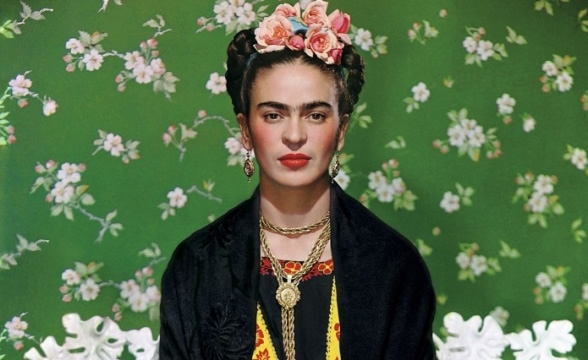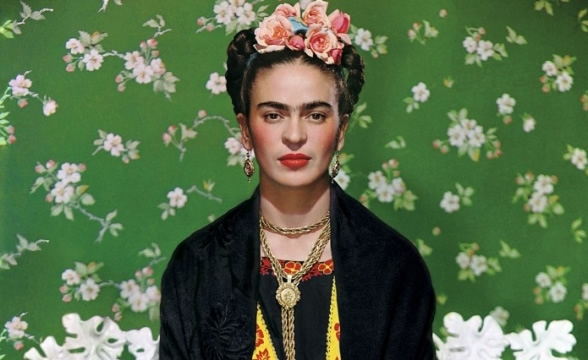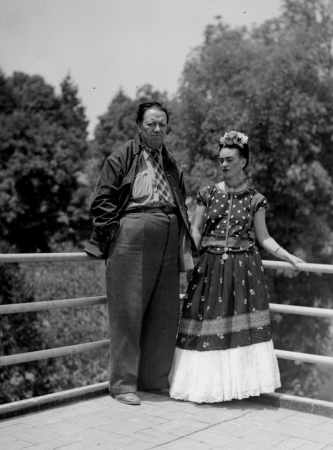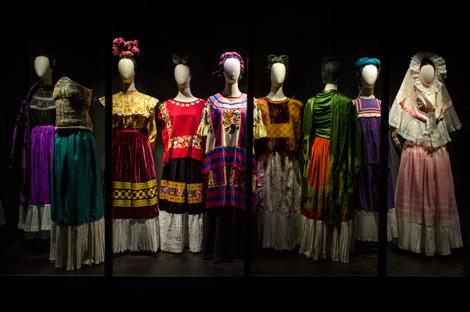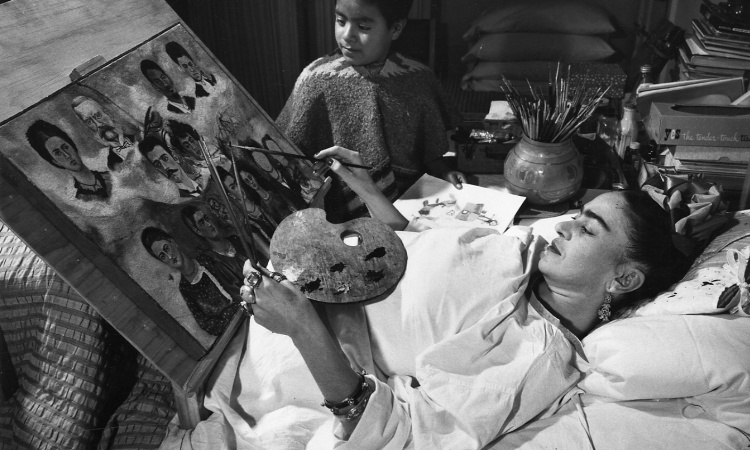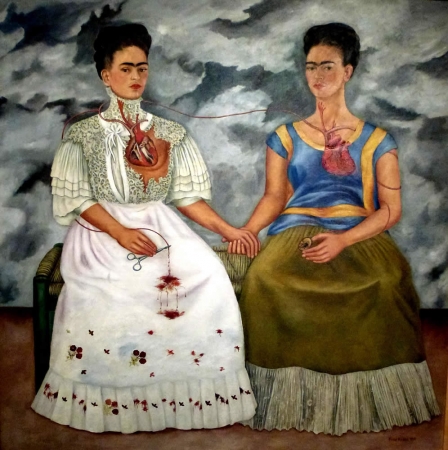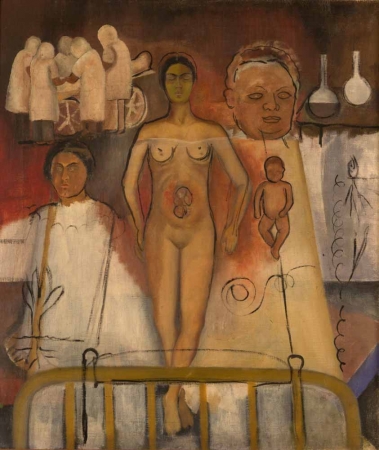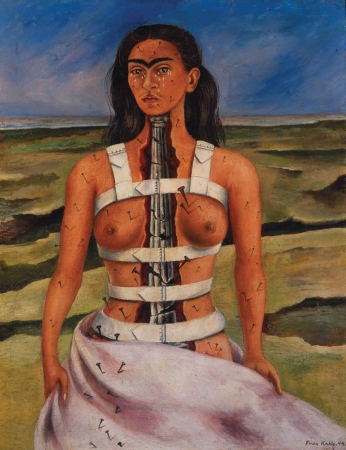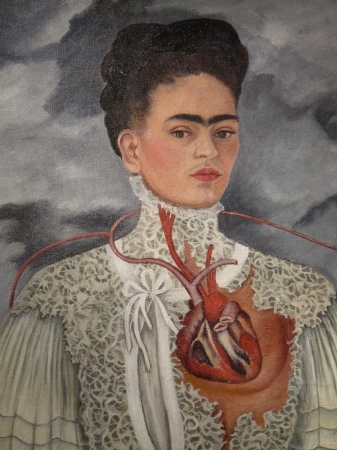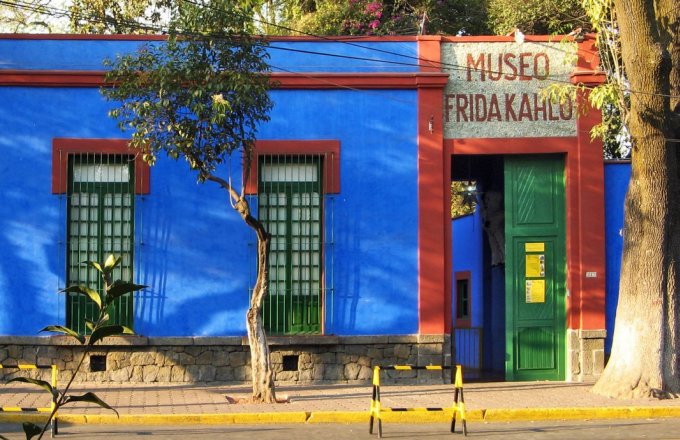It is hardly rare that a house’s decoration bears witness to those that have lived there, but there can’t be many places that reflect the personality that shaped them as much as Frida Kahlo’s La Casa Azul in Mexico. The artist’s home from beginning to end – she was born there in 1907 and died there in 1954 – it is today a museum dedicated to its owner and her very unique style.
Born Magdalena Carmen Frieda Kahlo y Calderón, Frida (she dropped the ‘e’ in 1935,) lived in the bright blue house on what was then the outskirts of Mexico City as a child. It was a tumultuous time in Mexico – revolution broke out in 1910, Kahlo used to recall being ushered inside when her mother heard gunfire in the streets. It was also an extremely tumultuous time for Kahlo, who suffered from polio and was involved in a horrific bus accident in 1925 that resulted in terrible injuries and endless pain for the rest of her life, changing the course of it in multiple ways. It was whilst confined to bed for almost two years in a full body cast that she took up painting, using a specially adapted easel to paint lying down. Of her 143 paintings, 55 are self-portraits, depicting the isolation and the psychological and physical wounds that the tragedy inflicted, as well as her inability to have children after it. Surreal they may seen, but the pain they showed was all too real for Kahlo, who once said, “I never painted dreams. I painted my own reality.”
Her husband, Diego Rivera, was also an artist twenty years her senior – and rather larger. They were often referred to as ‘the dove and the elephant.’ Far from straightforward, their relationship saw both of them having multiple affairs – her with Josephine Baker amongst others, him with her sister Cristina. They divorced but remarried in 1940. After her death, he was said to be heartbroken, ordering her dressing room and clothes to be locked away – where they remained for over fifty years, before being revealed in an exhibition at the house entitled, “Appearances can be Deceiving,” in 2013. As Kahlo’s fame blossomed years after her death, so she became a figure known almost as much for her iconic look as she was for her surreal self-portraits. Her fondness for traditional Tehuana style dresses said to be adopted to hide the withered leg her childhood polio had left her with, her way of wearing flowers in her hair often attributed to Kahlo wanting to highlight her own vulnerability and her proud and ever present monobrow, often cited as a rebellion against the uniformity of our conception of beauty, all marked her out as a renegade and style icon.
Whilst Frida and Diego didn’t live in the Casa Azul for their whole marriage, it is there that they are both most associated with. As lifetime Communists, theirs was a house of politics, painting and passion. At one time, they lent it to Trotsky, then on the run from Stalin. Frida died there aged just 47, Rivero three years later, leaving La Casa Azul to the Mexican nation with instructions to keep it as it was. With it’s bright blue walls and blend of traditional Mexican folk techniques with something a little surreal, it is now a shrine to all things Kahlo. Built in traditional style around a courtyard garden, it is festooned with color. Visitors find a traditional kitchen, complete with bright yellow floor and table, cobalt blue counters and traditional earthenware pots. Frida’s bedroom still today shows the bed she used paint from and houses one of her body casts as well as clothing and the tribal jewelry she was famous for, her studio still shows her easel and her wheelchair. The house is covered in Mexican art, with a pyramid in the courtyard dedicated to pre Hispanic pieces. Outside, one wall is incrusted with shells. As much as Kahlo herself conjures up unmistakable imagery of flower-laden hair, traditional Mexican dress, and layers and layers of color, so La Casa Azul displays the same sensibility. It entirely reflects the story-laden quality that all aspects of Kahlo’s aesthetic life represented. It is all, absolutely, unmistakably Frida Kahlo. And it is a testament to just how strong that visual is that you could probably name its owner at very first glance.
All photos courtesy of Museo Frida Kahlo
